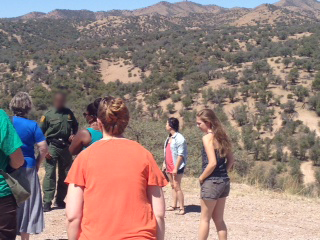Toward a Celebration of the Fourth of July
By Amy E. Steele, MDiv (2000) PhD (2012)
“The eye of the reformer is met with angry flashes, portending disastrous times; but his heart may well beat lighter at the thought that America is young, and that she is still in the impressible stage of her existence. May he not hope that high lessons of wisdom, of justice and of truth, will yet give direction to her destiny? Were the nation older, the patriot’s heart might be sadder, and the reformer’s brow heavier. Its future might be shrouded in gloom, and the hope of its prophets go out in sorrow. There is consolation in the thought that America is young.” [excerpt from the Frederick Douglass’ address, “What to the Negro is the Fourth of July, embedded below]
I imagine many of my ancestors bent over in cotton, tobacco, and indigo plantations after the war of independence asking like former slave and freedman, Frederick Douglass, “What to the Negro is the Fourth of July?” The distance from this blog to Douglass’ July 5, 1852, address is short.
I remember as a high school senior I, a young black woman from the South, bought and wore a denim jacket with the American flag printed boldly across its back. In the late 1980s I was making a statement that “I, too, Sing America.” I knew then that the quest for citizenship was a struggle for the immigrant, but I sensed that somehow that struggle was still also mine, as I and many from my community dealt internally and publicly with ambivalence about our welcome here. But the new public tragedy is the struggle for citizenship being fought at the US/Mexico border.
 Just a few weeks ago, I lead the Maymester course, Traversing Our National Wound: Immigration at the US/Mexico Border, partnering with BorderLinks http://www.borderlinks.org/, an outstanding organization that helps us navigate the experience. While there is much to report upon for public reflection, I’ll focus on one story for now: the story of Jose Antonio Elena Rodriguez, a 16-year-old boy murdered by Border Patrol in Nogales, Sonora, in 2012 for throwing rocks at an agent through the border wall. At the site of his murder is a mural of his beautiful brown boyish face. His family can no longer hear his laughter, but his voice cries out from the ground.
Just a few weeks ago, I lead the Maymester course, Traversing Our National Wound: Immigration at the US/Mexico Border, partnering with BorderLinks http://www.borderlinks.org/, an outstanding organization that helps us navigate the experience. While there is much to report upon for public reflection, I’ll focus on one story for now: the story of Jose Antonio Elena Rodriguez, a 16-year-old boy murdered by Border Patrol in Nogales, Sonora, in 2012 for throwing rocks at an agent through the border wall. At the site of his murder is a mural of his beautiful brown boyish face. His family can no longer hear his laughter, but his voice cries out from the ground.
I do not mean to demonize the Border Patrol here. They are mere agents of a system, a problematic ideal, a policy. Neither can I romanticize the life of a boy I did not know. But he is my own son, the Border Patrol agent, my brother. I do not wish to make either of them an impersonal story, no more than I wish to depersonalize the stories of the hundreds of thousands of children crossing the border everyday without their parents. The story of the immigrant is a human story, common to the labor migration stories embedded in the making of the USA.
And Douglass is right! We are a young nation, still. And my prophetic hope is that wisdom, truth, justice, and a belief in our common humanity “will yet give direction” to our future together paved with the stories of real people of all races and ethnicities.